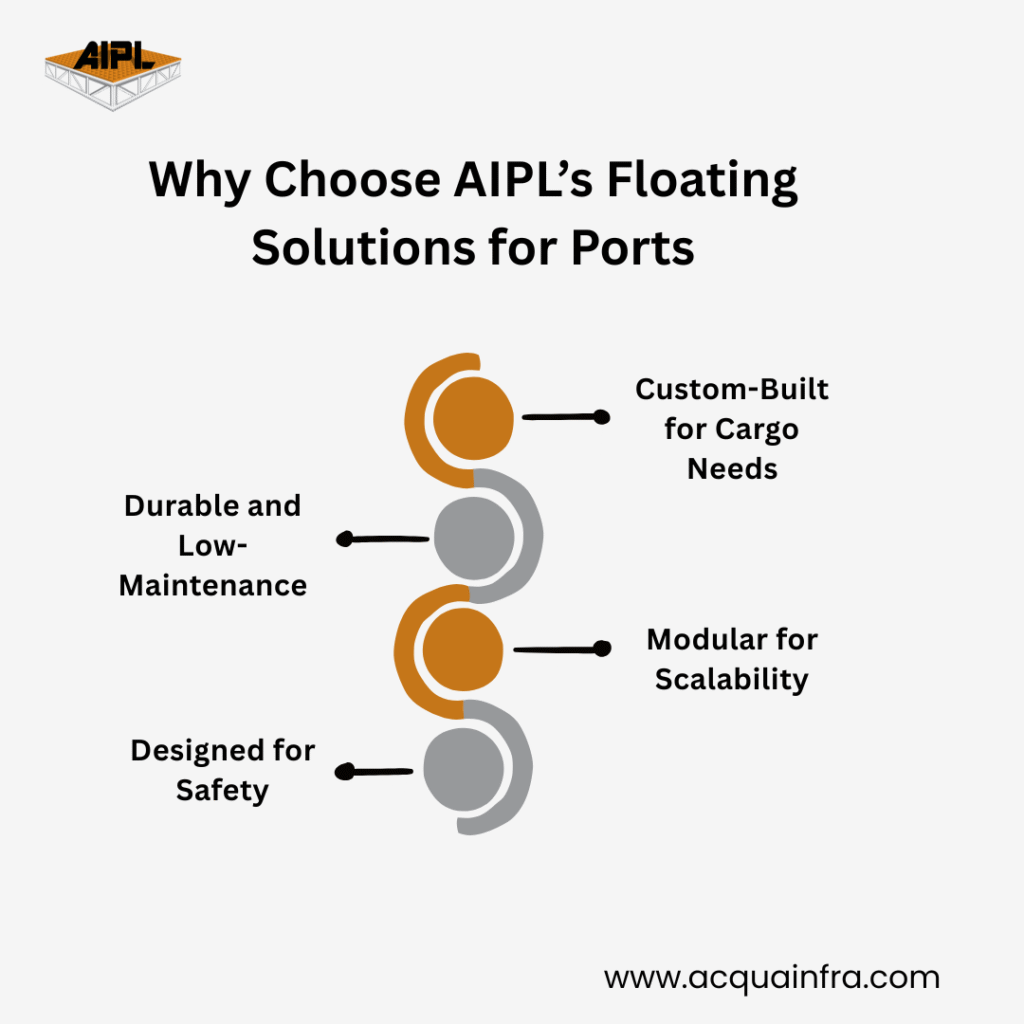
From bustling container terminals to smaller inland river ports, every second in cargo handling matters. A ship waiting to unload is money lost for both the port operator and the shipping company. Yet, many ports still rely on fixed infrastructure that cannot adapt quickly to fluctuations in demand, changes in water levels, or the increasing size of modern vessels.
I once visited a mid-sized river port in West Bengal during the peak monsoon season. The water level had risen dramatically, making the old fixed jetty practically unusable for smaller vessels. But right next to it, a floating cargo handling platform operated without interruption — adjusting seamlessly to the water level. That day, it was clear to me that the future of port efficiency is floating.
Floating products, such as modular pontoons, floating berths, and cargo handling platforms, are transforming how ports operate — making them faster, safer, and more adaptable.
Cargo handling is at the heart of every port’s operation. Whether it's coal, grain, containers, or bulk goods, efficiency determines profitability. Floating platforms are game-changers here.
Berthing may sound simple — tie the ship, unload, and move on. But in reality, it’s a complex process that requires safety, timing, and precision. Floating berthing products are transforming this process in several ways.
Ports often face the challenge of limited expansion space. Floating products solve this by adding operational capacity on water, without the need to acquire or reclaim land.
Analogy: Think of floating berths and platforms as “adding extra checkout counters” in a busy supermarket during the festive rush — queues move faster, and customers leave happier.

At AIPL, we’ve spent years perfecting floating solutions that handle the demanding conditions of both coastal and inland ports.
We don’t just sell floating products — we engineer solutions that integrate seamlessly into existing port workflows.
In a world where maritime trade volumes are growing every year, ports can’t afford bottlenecks or inefficiencies. Floating products for cargo handling and berthing bring speed, flexibility, and cost savings, making them a strategic investment for the future.
Whether your port needs to handle seasonal surges, adapt to tidal variations, or boost throughput without massive capital investment, floating solutions from AIPL deliver the reliability and adaptability you need.
Stop losing time and money to fixed infrastructure limitations. Acquafront Infrastructure (AIPL) delivers custom, durable floating platforms and berths that adapt to water levels and increase cargo handling speed.
Upgrade your port efficiency and throughput—contact us for a tailored solution.
Boost Port Efficiency: Enquire Now
Q1: What types of floating structures does AIPL offer?
AIPL offers four major types of modular floats tailored for diverse industrial applications: • MS Modular Barges • Steel Integrated Floating Jetty (SIFJ) • GFRC (Glass Fiber Reinforced Concrete) Floating Beams • HDPE Cubes
Q2: What is Acquafront Infrastructure Pvt. Ltd. (AIPL), and what does the company specialize
Acquafront Infrastructure Pvt. Ltd. (AIPL) is a pioneering company specializing in the design, manufacturing, and installation of advanced floating infrastructure systems for maritime and inland waterways. Since 2018, AIPL has been delivering IP-driven and sustainable turnkey solutions tailored for sectors such as water supply, renewable energy, tourism, dredging, defence, and transportation
Q3: Are your designs compliant with Indian standards or certified by third-party institutions?
Yes, all our designs adhere to applicable Indian Standards such as IR-Class, IS 800, IS 456, IS 875, etc. Additionally, we support third-party design vetting through agencies like IR Class, IITs, and Naval consultants as required.
Q4: How can I get in touch with AIPL for a new project or partnership?
You can submit your inquiry directly through our website’s contact form: https://acquainfra.com/enquiry
Q5:Do you offer both manufacturing and installation services?
Yes, AIPL provides end-to-end solutions, including design, fabrication, transportation, and on-site installation of floating infrastructure.
